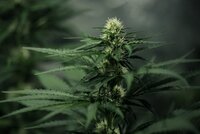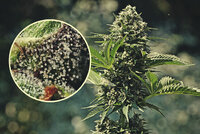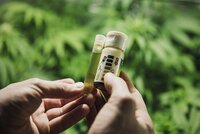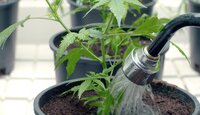- Thread starter
- #221
DrCannaCanadian
Well-Known Member
I recently had a question on using weight, instead of feel, to water seedlings in solo cups. And since we know how easy it is to overwater seedlings, I put together a few tips from my own experiences to help me out in my future grows.
1) Establish our dry weight - the point at which we need to water:
2) For a newborn seedling, it is safer to water with only 30 ml (1oz) of water (no nutes & pH of 6.50) down the middle to help drive the primary tap root to the bottom of the cup. For newborns, we can also alternate between watering the middle and watering the edges of the cup. For a 1 week old seedling, we can water slowly & gently, with about 90 ml (3 oz) water only (no nutes & pH of 6.50), or until we see run-off dripping out the bottom. Remember, we want the soil to be moist, not soaking wet.
3) Spritz lightly with water every 12 hours for the next 24 hours - use a humidity dome if you want:
4) Weigh again after 24 hours:
5) Here's where a lot of people can get into trouble! Most of the water is now pooled at the bottom of the solo cup. We need the plant to drink that water over the next 24 hours. So, use a shot glass and slowly water the edges of the soil with 30 ml (1 oz) of water. Then walk away!
6) Spritz lightly with water every 12 hours for the next 24 hours - use a humidity dome if you want:
7) Somewhere between 12 hours and 24 hours later, we should be ready to water again:
7) In summary, for soil in a solo cup, we can see there is approximately a 2 day wet/dry cycle for soil.












 lol
lol





